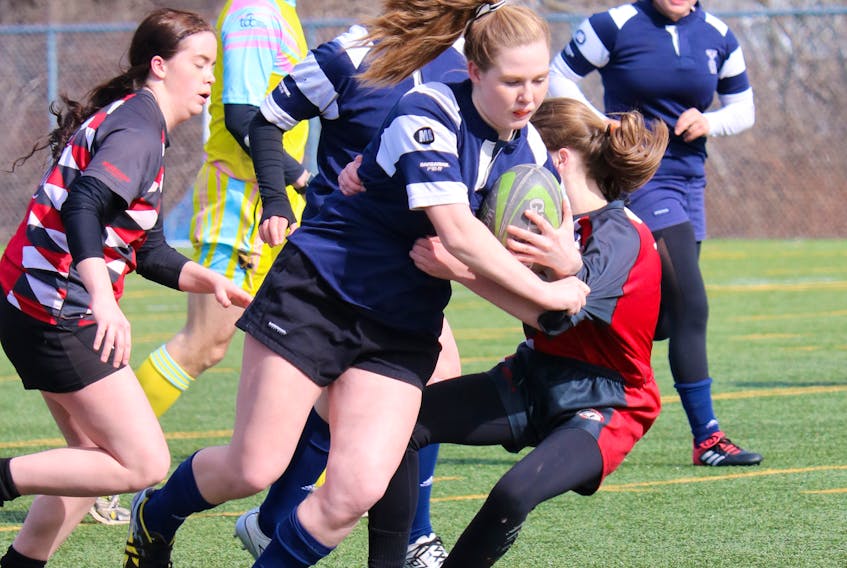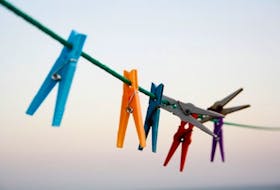I think it was interesting that during the same week NHL commissioner Gary Bettman was, basically, telling Canadian MPs that eliminating all head-contact hits in the league would mean the end of body-checking altogether, a battle over high school rugby in this province teeter-tottered back-and-forth before, eventually, returning not as a Nova Scotia Schools Athletic Federation (NSSAF) run sport, but more of a club-sport, to be overseen by Rugby Nova Scotia.
Some of the connections are obvious. More is known about traumatic head injuries, such as concussions, and that has concerned - scared might be a better word - a lot of people. Rightfully so.
Perhaps most concerning is the reality these aren’t broken bones which can heal, relatively, back to new and be forgotten about; other than when sharing injury stories, as athletes sometimes do. Head injuries can have long-lasting effects, which may require the athlete to give up his or her beloved sport, and produce negative consequences for everyday activities – long-term.
From another angle though, I think it was oddly ironic that in one case you have a league – the NHL - defending their game and the way they’ve dealt with head injuries, while politicians and doctors suggested they could and should do more; and in the other, politicians led by provincial Education Minister Zach Churchill, and reportedly supported by doctors, fighting back against the governing body – the NSSAF – who was ready to retire the sport immediately because of its inherent dangers.
Of course I recognize I’m talking about one of the most powerful sport leagues in the world – the NHL – whose athletes make millions of dollars, in contrast to one high school sport in Nova Scotia, but I think it speaks to the bigger conundrum we have in society of trying to make our contact sports safer, while still maintaining them as contact sports.
PREVIOUS PENALTY SHOTS COLUMNS:
Different age, same game, more memories
Expedia includes Antigonish as a ‘must-see’ hockey town
The New England legacy adds another layer
Like or dislike Bettman, and most hockey fans have decided the latter (although he shouldn’t feel too bad, booing league commissioners seems to be a ritual now), he does make a reasonable point about much of the head-contact being unintentional but inevitable, since body-checking is part of the game and the conditioning and speed of players, and the play, continues to grow.
Stronger and faster NHL players don’t necessarily target the head when finishing a check, but if the targeted player shifts his body or drops his head at the last minute, happens to be a few inches shorter, is bumped by a third player just before the contact, or a number of other factors occur, head contact can and, inevitably, will happen. Bettman stressed the confrontation between the taller and shorter player when making the argument in his meeting with the MPs.
Bettman didn’t help his argument but insisting fighting still needs to be part of NHL hockey. I think it’s a total contradiction when you suggest head-injuries are inevitable through non-intentional contact then, in the same breath, defend fighting where the goal is to punch someone in the face/head … very intentionally. Hockey at its highest levels is going to have to sort that out for credibility; and using the outdated argument that fighting helps the game police itself is losing resonance, since fighting is slowly going away anyways and is less prominent at times (in the playoffs) when the stakes are at the highest.
Rugby is also seeing better conditioned and, subsequently, faster players so, again, harder contact is inevitable. And, like hockey at the NHL level or just when body-checking starts, it doesn’t have to be malicious or reckless contact to cause the injury. Nor, as we understand with concussions, does it even have to be head contact; a tackle causing a whiplash effect can be very damaging.
So, for me, the debate really boils down to; can we accept bad injuries – especially head trauma – will happen in contact sports no matter how much education, penalties to perpetrators of intentional bad hits, better equipment, and whatever other positive steps are taken, will still happen?
Hockey and rugby, as well as football and other contact sports, are popular, in part, because of their aggressive and physical nature. That may not be the case for some fans but, for many, it is. Taking the contact out is changing these sports fundamentally … creating a different sport in some cases.
Maybe the NSSAF wanted to take themselves out of the conversation as far as rugby, and maybe Bettman somewhat satisfied MPs with his inevitability argument, but the debates will continue to go on.









